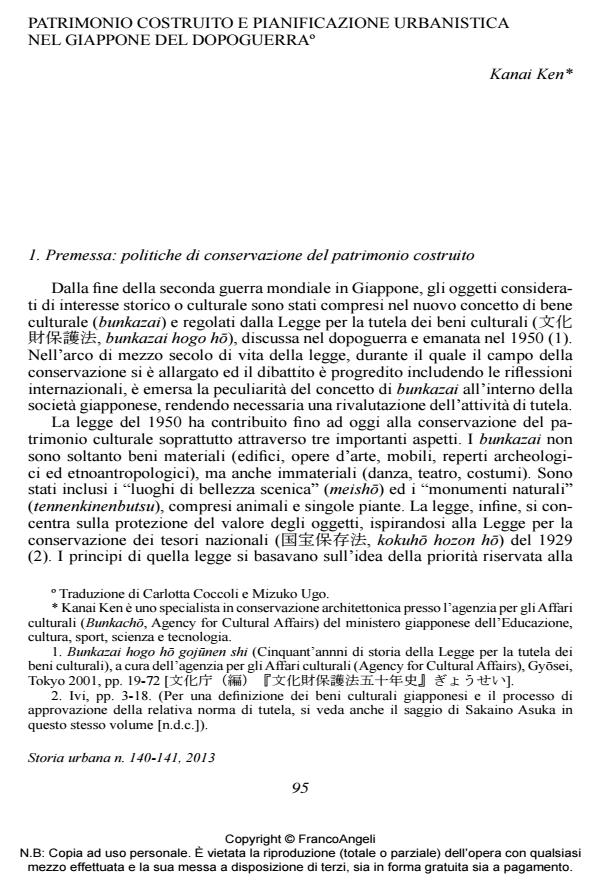Immovable Cultural Heritage and Urban Settings in Post-war Japan
Journal title STORIA URBANA
Author/s Kanai Ken
Publishing Year 2014 Issue 2013/140-141
Language Italian Pages 31 P. 95-125 File size 8242 KB
DOI 10.3280/SU2013-140004
DOI is like a bar code for intellectual property: to have more infomation
click here
Below, you can see the article first page
If you want to buy this article in PDF format, you can do it, following the instructions to buy download credits

FrancoAngeli is member of Publishers International Linking Association, Inc (PILA), a not-for-profit association which run the CrossRef service enabling links to and from online scholarly content.
The Law for the Protection of Cultural Properties (bunkazai) was legislated under the occupation of the SCAP (Supreme Commander for the Allied Powers) in Japan in 1950. This study examines the legislation process of this Law in order to understand which could have been the infl uence of the American policy and practice of historic heritage preservation. Moreover, through the analysis of some case-studies, this paper aims at reconsidering the present state of protection of immovable cultural heritage in Japan and seeking for its future potentiality. It is not easy to fi nd a clear relationship between bunkazai conservation and the reconstruction policies and practices in the war-damaged cities after the Second World War. Immovable cultural heritage such as buildings, archaeological sites and landscape contains various values including historical, economic and social values. However, since the end of the Second World War, conservation of bunkazai has been taken care under the governmental leadership and strongly focused on the historical and cultural values of the cultural objects, their features and materials. On the other hand, other organizations and groups have carried out a different kind of conservation experiences, which take care of the living aspect of cultural heritage. As a result, despite of the war and the loss of so much of the cultural heritage, a close relationship can paradoxically be found between historic aspect and living aspect of buildings and sites.
Keywords: Cultural Properties Conservation Policy Urban Planning Occupation of Ghq/Scap Post-War Society
Kanai Ken, Patrimonio costruito e pianificazione urbanistica nel Giappone del dopoguerra in "STORIA URBANA " 140-141/2013, pp 95-125, DOI: 10.3280/SU2013-140004